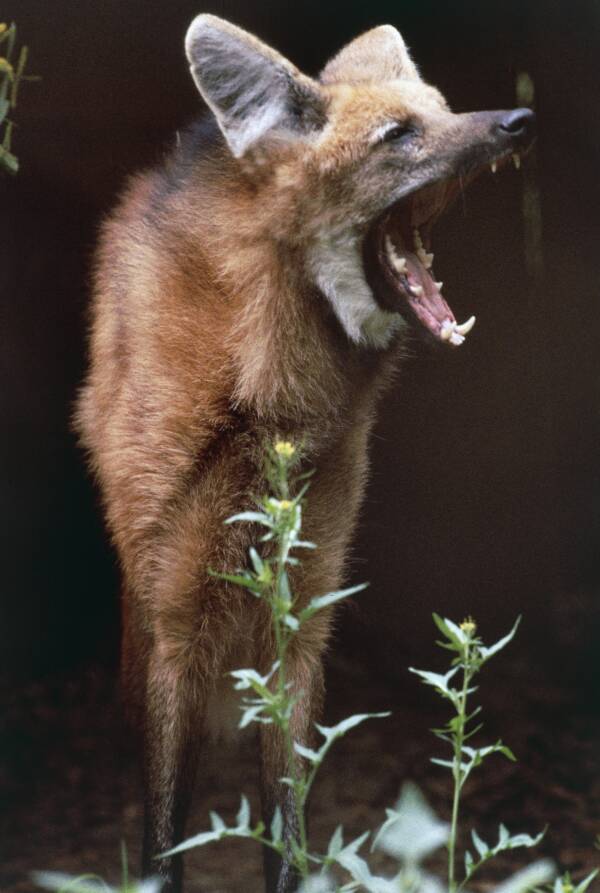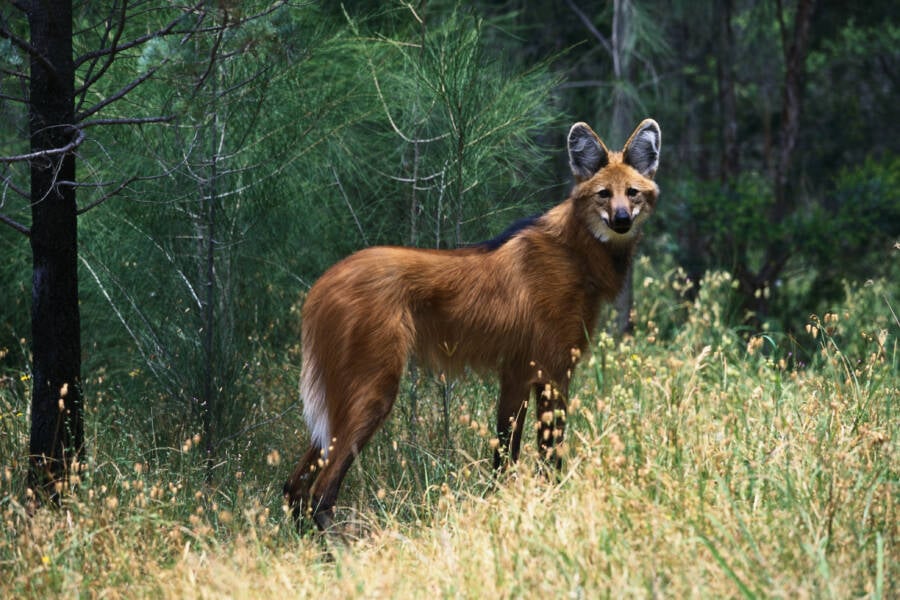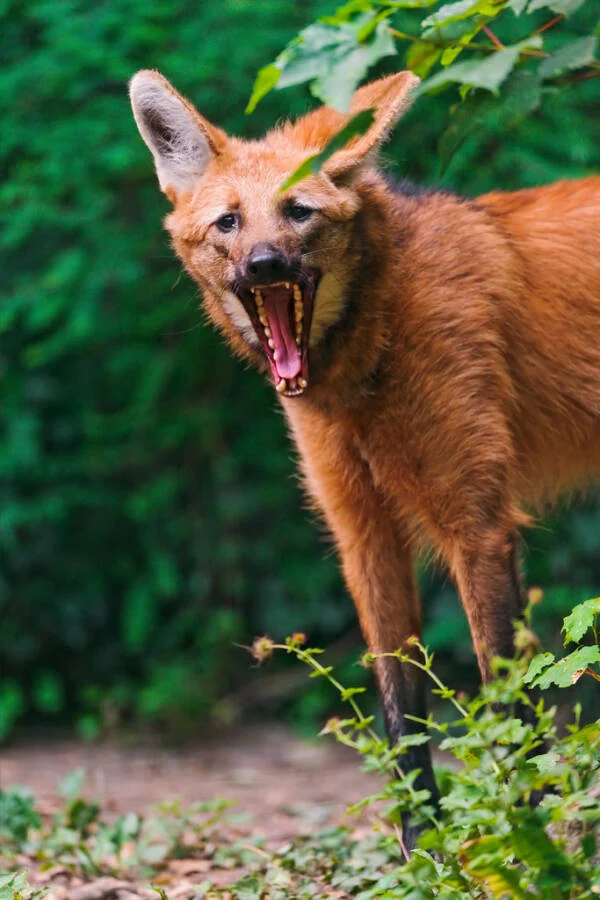At first sight, the maned wolf may resemble a hybrid of a fox and a dog. Despite what its name might imply, it is neither a fox nor a true wolf.
The maned wolf is scientifically classified as Chrysocyon brachyurus, placing it in a category entirely its own. While it is commonly found across South America, urban expansion poses a significant threat to its population, especially in Uruguay where it is almost extinct. The use of its body parts in traditional medicine also compounds its challenges, despite lacking any proven health benefits.
Explore the fascinating world of this extraordinary animal.
All About The Incredible Maned Wolf
 Discover The Stilt-Legged South American Fox-Wolf With Marijuana-Scented Urine
Discover The Stilt-Legged South American Fox-Wolf With Marijuana-Scented UrineSporting a dense red fur, elongated black limbs, and prominent erect ears, the maned wolf can reach weights of up to 66 pounds and lengths of nearly three feet, as noted by The Smithsonian. It is omnivorous and nocturnal, flourishing in the savanna-like territories predominantly in Brazil's northeast.
Although previously seen in countries such as Argentina and Uruguay, urbanization in the latter has pushed it towards extinction, prompting a migration to more northern areas.
Chrysocyon brachyurus tends to be a loner when searching for food, foraging by itself rather than in groups. It is an omnivore with a diet that primarily consists of seasonal fruits and vegetables, supplemented by small birds and insects.
Unlike other predators, the maned wolf does not typically hunt large prey. Its main threats are domestic dogs and pumas, both of which have been known to kill it.
The reproductive behaviors of the maned wolf are not well-documented. However, it is known to be monogamous, staying with a single mate for life. Typically, a litter consists of two to three pups, with a gestation period of about two months.
Despite its resilience, the maned wolf faces severe risks from urban expansion and the use of its parts in traditional medicine, both of which have pushed it towards the brink of extinction at times.
Threats From Urbanization And Traditional Medicine
 Discover The Stilt-Legged South American Fox-Wolf With Marijuana-Scented Urine
Discover The Stilt-Legged South American Fox-Wolf With Marijuana-Scented UrineThe maned wolf's survival is increasingly at risk due to the expansion of urban areas, particularly in Uruguay. Beyond the danger posed by domestic dogs, it is also vulnerable to diseases transmitted by other canines, which have proven fatal in some cases.
Furthermore, as urban areas encroach on their natural habitats, maned wolves are often victims of vehicle collisions, adding another layer of threat to their survival. Additionally, they are sometimes hunted by humans, particularly chicken farmers who retaliate against the wolves for preying on their livestock.
Historically, native Brazilians hunted the maned wolf for its body parts, using them in traditional medicines despite the lack of evidence supporting any medicinal benefits. The wolf's eyes have also been sought after, believed by some to bring good luck.
Although the maned wolf has not yet been declared extinct, conservationists recognize the serious threats it faces and are actively working to secure its future in the wild.
Efforts To Save The Maned Wolf
 Discover The Stilt-Legged South American Fox-Wolf With Marijuana-Scented Urine
Discover The Stilt-Legged South American Fox-Wolf With Marijuana-Scented UrineThe maned wolf is currently classified under CITES Appendix II, is considered Endangered by the U.S. ESA, and is listed as Vulnerable by the IUCN. Despite these protections, their numbers are still declining, and it is likely that they will be categorized as endangered in the near future.
In response to urbanization and other threats, conservation efforts are being made to help the species not only survive but also prosper in its native environments.
Protective legislation has been enacted in Brazil, Uruguay, and Argentina to prohibit hunting of the maned wolf, and zoos are playing a critical role in bolstering populations that are particularly vulnerable, ensuring their survival in a controlled setting.
Known by many names, the maned wolf has been a resilient survivor in the wild for thousands of years and deserves ongoing efforts to ensure its continued existence in spite of human impact.



















